|
|
|
|
|
|
|
|
|
|
May Newsletter 2023
|
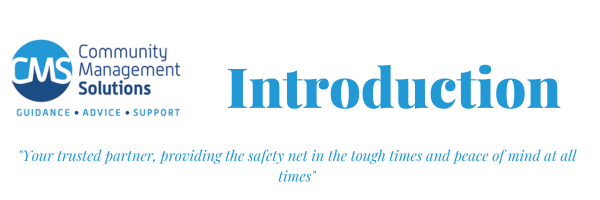
|
|
|
Hello everyone and welcome to our May Newsletter.
|
I wanted to discuss our motto as above “Your trusted partner, providing the safety net in the tough times and peace of mind at all times" and put that into context.
|
This is a key statement in our organisational mission and values and underpins everything that we try and accomplish for our valued members.
|
The trust comes from being firstly, a not for profit community based organisation who actually understands the challenges and issues that our members face on a daily basis, it comes from being in business for over 50 years and surviving the test of time, it comes from trying to treat our members with respect, empathy and courtesy and to be responsive to their needs, the trust is from our business model which only requires yearly commitment from our members with no long term contracts, and finally it comes from treating our members as part of the Community Management Solutions Family and by following the golden rule which denotes that you should treat others the way you want to be treated yourself.
|
We do act as a true business partner for your organisation, your problem becomes our problem, and we will try and honestly provide the best solution that is available at any given time based on the situation. Sometimes this requires thought and research because the areas that we deal with are filled with complexities and danger and we must ensure that we protect our members to the best of our ability.
|
We provide a safety net for our members, which is a net that can support our members when they encounter difficult situations and in our area of expertise this is unfortunately inevitable from time to time. Therefore, once that occurs then we are ready and able to assist you and the experience and skill of our people will guide you with the best option available.
|
When the unexpected occurs or you are facing dealing with a serious and complex industrial relations or other matter then of course as a member you will obtain an immediate response as you are a current member, this saves enormous time and research as we are there to support you during this time.
|
It is fair to say that over the last few years with the COVID19 Pandemic and challenges and uncertainty in the economy and specifically with current and future changes to the Industrial Relations Landscape we are all somewhat to a degree experiencing or have experienced hardship and adversity during this time. This can take a heavy toll on our health , the health of our people which affects mental health, mood and outlook. Our role during these tough times is to provide resilience for you, to deal with adversity and to take the burden away to assist you in dealing with complex matters so that you can concentrate on what you do best.
|
And finally, “peace of mind at all times" knowing that our team is just a phone call or email away to help you throughout the whole year of routine matters, inquires, confirmation of information, advice, guidance and direction on all matters pertaining to Human Resources, Industrial Relations, Workplace Health and Safety, Finance, Payroll and Bookkeeping and a large amount of extra services when required.
|
I occasionally marvel at some of the complex cases that Craig and our HR/IR/Safety team do on a regular basis and the wonderful feedback that we receive from our members, perhaps responding to an adverse action claim, an unfair dismissal, discrimination matter, a termination, redundancy, common law claim, complex enterprise bargaining negotiations or hundreds of other inquiries our team will do their best to help answer the call.
|
|
The newsletter contains some excellent articles from our team so please take the time to peruse and if you have any questions then please give us a call.
|
Thank you for all the members who attended my Learning and Development Webinar, we also have a new webinar on performance management coming up shortly which is advertised in the newsletter.
|
|
Stay safe and thank you as always,
|
|
|
|
|
|
|
|
|
|
|
Introduction.......................................................................
|
|
Upcoming Webinars...........................................................
|
|
Membership Renewal.........................................................
|
|
NGS Super..........................................................................
|
|
Psychosocial Hazards in the Workplace..............................
|
|
Stress leave........................................................................
|
|
Pre employment Medical Examination................................
|
|
Survey................................................................................
|
|
Tool Tip.............................................................................
|
|
Tips for Smart Rostering....................................................
|
|
Staff member profile..........................................................
|
|
Are you meeting your Super Guarantee Obligations?..........
|
|
Full HR Service...................................................................
|
|
Workplace Rehabilitation....................................................
|
|
Game reviews, competitions, giveaways, fun activities for children.............................................................................
|
|
Psychological wellbeing......................................................
|
|
CMS Staff profiles and contacts..........................................
|
|
|
|
|
|
|
|
|
I have had a lot of recent discussions and requests from our members to do a webinar on Managing Performance, so this has been booked in and details to register are as below.
|
What we will be discussing will be:
|
- Documentation Required
- What constitutes best practice?
- Managing Performance
- Dealing with Underperformance
- Procedural Fairness and Natural Justice
- Risk Mitigation
- Tolerance
- Communication Strategies
- Serious Misconduct
- Proactively Preventing Underperformance
- Addressing underperformance
- Warnings and Disciplinary Action
- Facilitated Discussions, Mediation and Counselling
- Following Up
- Having difficult conversations
- Responses to frequently asked questions
Please register and please feel free to send in any questions to me directly prior to the webinar and I will address those during the session.
|
This will be followed up with an article in our next Newsletter.
|
|
|
|
|
|
Upcoming Free Member Webinars
|
|
|
Psychosocial Hazards and Risks in the Workplace
with Craig Pollard
|
Performance Management
with Kevin Prendergast
|
|
Wed 10th May 1pm
|
|
Wed 14th June 1pm
|
|
|
Past Webinars
You can find all past webinars that we have hosted in the past on our Website, under the member resources. Including Recruitment, Workplace Health and Safety, Investigations and Wellness. We are also posting the monthly HR/IR Webinars here.
|
|
For easier access to the webinars. Click the picture to the right.
|
|
|
|
|
|
2023 Membership
|
Have you renewed or forgot to renew?
|
It's that time of year again! Please get in contact if you have to make any changes to your Membership or would like more information. When paying through the bank please quote your invoice number.
|
|
You can download our 2023 Membership Renewal form HERE
|
|
|
|
|
|
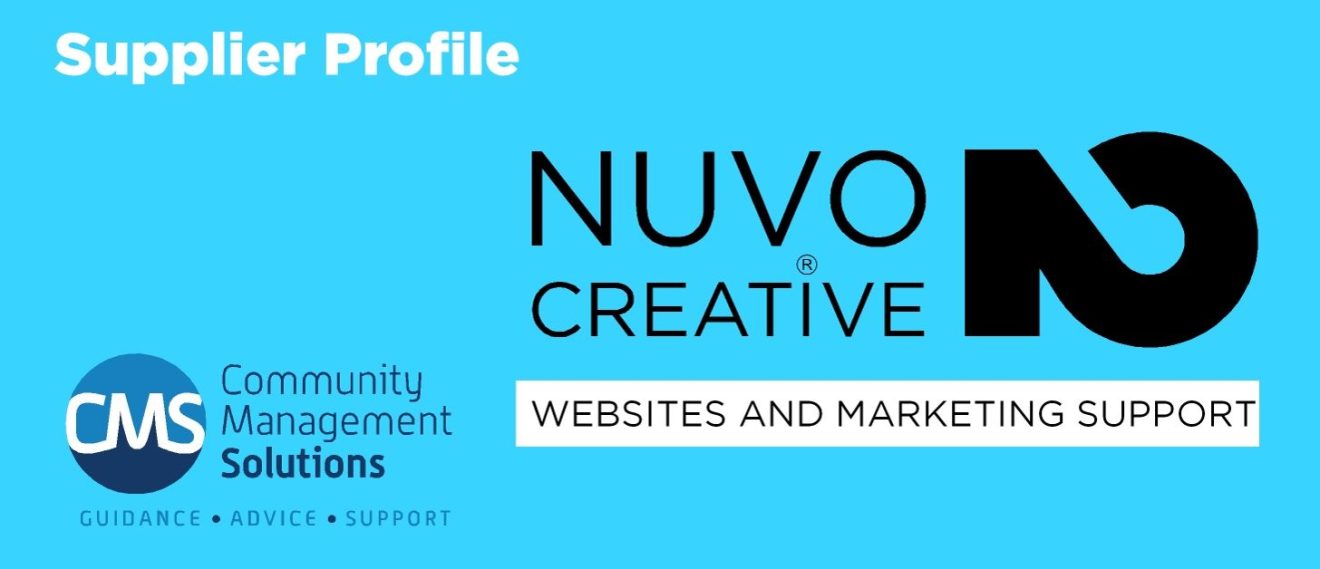
|
NuvoCreative
|
|
|
|
|
|
|
Advertisement - Industry Partner
|
|
|

|
Invest in Your world with NGS Super
|
|
NGS Super is the leading super fund for the independent education and community sectors. We understand that everyone is different and has unique needs and goals. That’s why the things that matter to you — value for money, quality products and personal service — matter to us too.
|
|
When you put your super savings with NGS here’s what you can expect:
|
|
Value for money: We keep our costs low to help you maximise your super savings. We were recognised by Money magazine as the Best Value Balanced Fund at the 2023 Best of the Best Awards.
|
|
Award-winning insurance: We offer affordable, quality insurance so you have financial support and peace of mind when you and your family need it most.
|
|
Personal service: Our Super Specialists and Financial Planners are here to help you make informed decisions about your super from the start of your career right through to your retirement and beyond.
|
|
A focus on tomorrow: We’ve set our sights on a carbon-neutral investment portfolio by 2030. We want to ensure our investments make a difference for our members and the planet.
|
Let NGS Super, take care of your tomorrow. To find out more or to join NGS Super visit www.ngssuper.com.au/super-fund or call us on 1300 133 177. Our Helpline is available Monday to Friday, 8am–8pm (AEST).
|
|
|
|
|
|
|
|
The Queensland Government has released a new “Code of Practice” into managing psychosocial hazards in the workplace. The introduction of this Code of Practice means that if an employee suffers a psychological injury in the workplace there is now a formal measure of what could have been put in place to prevent the injury.
|
This works in exactly the same way as the Code of Practice relating to removing asbestos, or concrete pumping. If an employee (or workplace visitor) suffered an injury whilst these activities are taking place, the expectation is that the employer, or person conducting a business or undertaking (PCBU), is complying with the Code of Practice to minimise the risks as much as possible. Now there is a Code of Practice for all businesses to minimise the risk of psychosocial hazards in the workplace.
|
|
Psychosocial hazards are anything at work that may cause psychological or physical harm.
|
- The way the tasks or job are designed, organised, managed and supervised.
- Tasks or jobs where there are inherent psychosocial hazards and risks.
- The equipment, working environment or requirements to undertake duties in physically hazardous environments, and
- Social factors at work, workplace relationships and social interactions.
which include things such as poor recognition or reward for work, remoteness, and isolation, bullying, sexual harassment, poor workplace relationships, and poor support (among others).
|
|
In addition to the new Code of Practice the Work Health and Safety Regulations are being updated to include psychosocial hazard regulations (the Regulations). These Regulations will give more specific detail about how duties under the WHS Act must be performed.
|
The Regulations define important terms, such as ‘psychosocial hazard’, ‘psychosocial risk’, and clarify what matters PCBUs should consider when implementing ways to manage psychosocial risks.
|
The outcome for employers is that there is now a series of quantifiable steps which must be taken to prevent psychosocial injuries. Failure to comply with these minimum standards will leave employers open to prosecution for failing to provide a safe system of work. This was something which wasn’t really possible before because there was no statutory benchmark against which an employer could be held liable. This is no longer the case.
|
Whilst the rights of employees to make a claim for psychological injuries has not changed, the new reality is that it will be easier to prove such injuries were caused “in relation to work” if the employer has not met their obligations under the Regulations and Code of Practice.
|
|
If you have any queries or concerns relating to this new Regulation, or any other workplace matter, please contact our Employment Relations team on 07 3852 5177 or email us at info@cmsolutions.org.au
|
|
|
|
|
|
|
|
Your Opinion Matters
Take our 3 minute survey
and be in with a chance to win a
$100 voucher of your choice!
|
|
|
|
|
|
|
A stressful work or home environment can quickly take its toll, and it is not uncommon to hear the phrase “Stress Leave” when burnout employees are requesting time off.
|
|
The fable of Stress Leave leaves many employers confused and unsure how to process this type of leave, but the truth is; Stress leave is not any different to Personal Leave.
|
|
|
|
|
Depending on your workplace’s policies, your employee may still need to supply a medical certificate and submit a leave form upon their return.
|
An employee may possibly submit a WorkCover claim for a stress related illness or injury, but this is not approached any differently than say a broken limb, or a bump on the head. Before any such claim can succeed however, they must be able to demonstrate that their medical condition was caused (or contributed to) by “unreasonable management action taken in an unreasonable way”. Performance management processes are specifically excluded from being considered in such claims.
|
Adopting “Mental Health Positive” practices in your workplace are a good way to avoid employee burnout and opens up avenues for stressed workers to seek the help they need, before it affects their performance.
|
Call our Team today on 07 3852 5177 if you would like further information about Stress Leave and what you can do as an employer.
|
|
|
|
|
|
|
|
By Zachary Zasada
Depending on the requirements of a role and the nature of your business, conducting a Pre-Employment Medical Examination (PEME) may be an effective way to ensure the health, safety, and well-being of your employees. A PEME is used to assess a potential employee’s suitability for a role based upon criteria that could impact their ability to perform the job in a safe and practical manner.
This may include, but is not limited to testing such as:
• Vision tests
• Hearing tests
• Blood tests
• Alcohol & other drug tests
• Cardiovascular tests
• Musculoskeletal & fitness tests, and
• Manual handling assessments, just to name a few.
|
Of course, how the results of these tests influence a hiring decision comes with a certain level of risk. That is, even if a PEME reveals information that could indicate a potential employee may not be suitable for the role, such as a jet pilot with high levels of visual and auditory impairment, there are some important things to consider when making a hiring decision with these results.
|
First, you must ensure that the PEME used to assess a candidate’s suitability, is only testing for conditions that have a clear and direct correlation to the inherent requirements of a particular role. Testing for general or unrelated health conditions that are not directly relevant to someone’s ability to perform the role, or their effect on the health and safety of themselves and others, may be classified as discrimination.
|
As such, under anti-discrimination laws, a candidate cannot be rejected for medical conditions that have no bearing on their capacity to safely fulfill the inherit requirements of the position. We recommend discussing this with any existing or potential PEME providers or sending us an enquiry if you are unsure about this.
|
If you are currently using or decide to conduct a PEME as part of your hiring decision, it is important to be upfront about this throughout each stage of the Recruitment process. For example, when posting a job advertisement on your website or an online job board (such as Seek), include a disclaimer that you will be asking candidates to undergo a PEME as part of their application.
|
This gives candidates the opportunity to decide if any pre-existing medical conditions may or may not pose a risk for them in fulfilling the inherent requirements of the role safely and productively. Additionally, it provides them the option to not apply for the position (if they’ve read the ad correctly, of course!), which then increases the overall quality of the suitable candidate pool.
|
The benefits of utilising PEME’s as part of your organisation’s Recruitment process include creating a safer and more efficient working environment through the reduction of workplace injuries (both physical & psychological), minimising losses of productivity resulting from workplace injuries, lower insurance premiums and fewer workers compensation claims, and enhanced employee performance through better person-job fit. Additionally, using PEME’s may signal that your organisation cares about the health, safety, and well-being of its people, which therefore leads to improvements in organisational culture and reputation.
|
However, there are some potential downsides to using PEME’s. The most obvious one being that using PEME’s costs money and time, which we could always use more of in other (and more effective) ways. Another, and slightly more contradictory one, is that using PEME’s may discourage suitable and high-performing candidates, because they have a personal, cultural, religious, or other moral objection to this practice. Now whether that is a “bad” thing is subjective, but certainly worth noting if your organisation decides to pursue or continue using PEME’s.
|
There are valid arguments for or against the use of PEME’s, so determining whether you should implement this practice within your business is not a “one size fits all” approach. It involves a review of your organisation’s overall operations, including but not limited to its:
• Mission, values & strategic objectives
• Policies & procedures
• Employment contracts
• Position descriptions
• Industrial instruments (relevant Awards &/or Enterprise Agreements)
• Legal, social & political environment, and
• Financial & budgetary constraints (“can” or “should” vs affordability)
|
|
At CMS, we pride ourselves on being the trusted partner of community group employers, providing accurate and practical expertise and advice. Our consultants can help you with reviewing the viability of implementing PEME’s within your organisation if this is something you are considering, so please get in touch for an obligation free discussion or send us an enquiry at any time.
|
|
|
|
Employment Relations Consultant
|
|
|
|
|
|
COMMUNITY MANAGEMENT SOLUTIONS ANNUAL MEMBER SURVEY
|
I would greatly appreciate if you could please take the time to compete our annual survey which will be sent out to all our members shortly.
|
It has been some time since our last survey, and I realise of course how busy everyone is but your comments are highly valued and we genuinely need your feedback so that we can continue with our continuous improvement policy.
|
The survey is relatively short and can be completed quickly and once we issue the survey, we will leave it open for four weeks.
|
|
Once we receive the feedback then we will closely examine the results and put into place appropriate strategies to improve our service to our members.
|
A sincere thank you in advance,
|
|
|
|
|
|
|
|
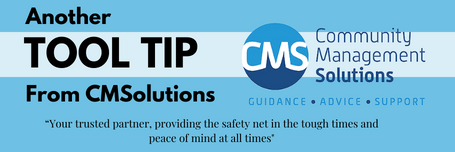
|
Workers have legal responsibilities under the Work Health and Safety Act 2011.
|
- Take reasonable care for your health and safety in the workplace
- Take reasonable care for the health and safety of others who may be affected by what you do or don’t do
- Follow any reasonable health and safety instructions from your employer. For example, use equipment properly, follow safe work policies and procedures and attend training.
- Ask for help if you are not sure how to safely perform your work
- Follow instructions and work safely
- Report hazards, unsafe situations and injuries to your employer.
|
|
|
|
|
|
|
|
|
|
1. Know your Award or Agreement. The more you understand your relevant workplace instrument, the easier it is to make good rostering decisions. You will want to look out for:
|
|
|
|
- Overtime provisions – How many hours can an employee work a day and a week.
- Meal Breaks – how long can an employee work before they must have a meal break
- Split Shift provisions.
- Shift and Weekend Allowances
|
|
|
|
2. Get creative. If you think your roster is perfect now, why not try getting creative. You do not have to implement any changes but coming up with multiple options could enlighten you to some improvements to your current structure.
|
|
3. Know your staffing costs. This will link closely with tip one. You should be aware of each staff members pay rates, including who is casual and permanent. Compare this with a budget or aim for your wages. It may not always be smart to accept additional business if the staffing costs outweigh the increase in sales/income.
|
4. Review excessive wages. If there are occasions where excessive wages occur it is a good idea to review these and identify if changes need to be made. For example, if employees frequently do overtime, identify why this is occurring. Do you need more staff or is there a particular client who needs extra time/care?
|
Contact one of our Employment Relations Advisors on 07 3852 5177.
|
|
|
|
|
|
Staff Member Profile
Zachary Zasada
|
|
|
Zach has joined our HR department as an honest and helpful Employment Relations Advisor.
|
He is passionate about all things Human Resources and loves supporting our members through the provision of detailed and measured advice.
|
|
Zach is an identical twin who loves watching YouTube, playing retro videogames, walking, and spending time with his partner, family, and friends.
|
|
|
|
|
|
|
|
The following changes came in force from 1st July 2022
|
|
|
|
Part 1. $450 Month Superannuation Threshold Abolished (for most employees except for those under 18, see below)
|
From 1st July 2022 employers must pay Super Guarantee (SG) on every dollar earnt, including the first $450 (for most employees except for those under 18). Treasury Laws Amendment (Enhancing Superannuation Outcomes For Australian and Helping Australian Businesses Invest) Bill 2021 – Parliament Australia)
|
Previously, employers did not need to pay SG if the employee did not earn $450 per month.
Some workers therefore received super contributions from their employers for the first time.
|
Employees Aged Under 18 & Paying Superannuation
|
For most employees, Australian businesses are required to pay an employee super on top of that person’s wage if the employee earns more than $450 (before taxes) in a calendar month.
If an employer has employees who are under 18 years of age, then the employee must also work more than 30 hours per week to qualify for their Super contributions.
|
You must pay super for an employee aged under 18 years if they:
|
- Are under 18 years of age,
- Are paid $450 or more before tax in salary and wages in a calendar month and
Work more than 30 hours a week, and
- Are not exempt under another exemption criteria
Part 2. The superannuation guarantee was set at 10.5%, as of 1st July 2022.
|
So any payroll paid on or after 1st July 2022, Super should have been paid at the 10.5% rate.
|
Upcoming Changes as of 1st July 2023
Part 3. The superannuation guarantee rate will increase to 11% as of the 1st of July 2023
|
|
So any payroll paid on or after 1st July 2023, Super will need to be been paid at the 11% rate.
|
If you have any questions, contact CMSolutions for assistance on 07 3852 5177.
|
|
|
|
|
|
|
|
|
|
|
|
|
|

|
A Guide to Workplace Rehabilitation
|
Reporting an Injury at Work:
If an employee sustains a workplace injury the employee, or someone authorised should report the injury to the immediate supervisor or manager.
Most workplaces have their own incident/injury reporting form.
|
A properly prepared incident/injury report form should contain the following information.
1. The name and date of birth and gender of the person injured.
|
|
2. The date and time the incident / injury occurred.
|
|
3. Where and how the incident/injury occurred.
|
|
4. The type of injury sustained.
|
|
5. The type of treatment required for the injury. e.g., first aid, Dr, ambulance, etc.
|
If the injury requires any form of medical treatment and / or time off from the regular place of employment, it is recommended that the injured employee should also lodge a claim with WorkCover Qld.
|
By law, certain incidents such as a death, serious injury or illness must be reported to Workplace Health and Safety Queensland (WHSQ). There could be penalties for failing to report these events.
|
It is also important to record any workplace incident or dangerous event that might be considered a “near miss”, where an injury did not occur, but the potential for an injury to occur was present. By reporting a workplace incident where no injury has occurred, this might enable corrective action to take place, and prevent a possible future injury.
|
Injuries at the workplace can result in any of the following:
|
|
1. Minor injuries that might require some first aid, but are not serious enough to prevent the employee from continuing to work.
|
|
2. Slightly more serious injuries that require medical treatment, and a small amount of recovery time off work, and recovery to full time duties occurs within a short period of time.
|
|
3. A very serious injury that might require extended recovery time away from work.
|
4. An injury that after all available and appropriate medical treatment is considered to have caused a permanent impairment where the injured employee might have difficulty returning to their pre-injury duties.
|
Rehabilitation & Return to Work
|
For employees who sustain a work-related injury, or illness, getting life back to normal is important.
|
There is information available for employees and employers when a work related incident occurs. Knowing your options, the steps to take, and who’s responsible for what, will make the rehabilitation and return to work journey easier, meaning the injured employee can get on with their normal life sooner.
|
Recovering from injury or illness
If you or an employee sustain a work-related injury or illness, the first thought is usually to want to recover and get things back to normal. Getting back to work is a big part of getting your life back on track.
|
Recovery and rehabilitation, means different things for different people. The employee, the employer, the insurer, and the treating doctor or rehabilitation provider, all have a part to play in the recovery journey.
|
Rehabilitation options
Rehabilitation is a vital part of getting better and back to normal life. There are lots of rehabilitation options, depending on the type of injury.
Once the treating doctor (either a GP or at a hospital) has assessed the work-related injury or illness and provided treatment, they will recommend the next steps on the road to recovery.
|
Who does what?
It can sometimes be confusing knowing who is responsible for different parts of the treatment and rehabilitation. The treating doctor will take care of managing the illness or injury overall. The treating Doctor will provide a diagnosis, and watch over the recovery progress, and help with the return to work.
|
What if a specialist is required?
If the injury is something a GP can’t treat themselves, they’ll need to refer the injured employee to another medical provider. This could be directly to an allied health professional for treatment or to a specialist for further examination.
Sometimes WorkCover will arrange a Specialist Medical Review.
The Specialist Medical Review will help to confirm whether the employee can begin their recovery journey by receiving treatment from an allied health professional of some kind or, in more serious cases, whether surgery is required.
|
Allied health treatments
Allied health practitioners can treat and manage the clinical care of an injury or illness and can assist greatly in restoring health and function. This is a very big part of getting the employee back to work and normal life.
|
Approved treatments
There are many different kinds of medical and allied health professionals that may be accessed. However, there are some that are not covered by WorkCover.
|
|
|
|
Approved registered providers include:
• Medical practitioners
• Dentists
• Physiotherapists
• Occupational therapists
• Psychologists
• Counsellors
• Psychotherapists
• Speech pathologists
• Chiropractors
• Osteopaths
• Podiatrists
|
|
Approved non-board registered providers:
• Exercise physiologists
• Rehabilitation counsellors
• Social workers
• Dieticians
• Diversional therapists
• Job placement providers
• Vocational services providers.
|
|
|
|
|
Services Not Covered By WorkCover
|
|
|
|
Non-Approved Treatment Providers
• Massage therapists
• Natural therapists
• Pilates instructors
• Personal trainers
• Naturopaths
|
|
. Acupuncturists who are not Chinese medicine practitioners
• Reflexologists
• Myotherapists
• Hypnotherapists
• Dance or Music therapists.
|
|
|
|
If a service isn't covered the injured worker will be responsible for any costs.
|
Starting The Recovery
When a work-related injury occurs, there are steps the injured employee will need to take to get on the road to recovery.
Acting quickly can make a big difference to how soon the employee will recover and get back to the job and normal life.
|
What to do first?
The first thing to do is seek medical assistance. Depending on the type and seriousness of the injury or illness, this could be the first aid officer or a GP.
|
With more serious cases, the injured employee, should report to the hospital or call an ambulance immediately.
|
The employer should be notified as soon as possible, so they can record the incident and notify WorkCover.
|
The treating doctor or the hospital will provide a work capacity certificate at the first consultation and a copy of this certificate needs to be given to the employer and submitted with the WorkCover claim.
|
What comes next?
Once the injury or illness has been assessed and the claim has been approved, the next process is about rehabilitation. Rehabilitation means to work towards getting the employee back to the way things were before the injury occurred.
|
The best outcome for the employee and the employer is a return to normal duties as quickly as possible. This will also lessen the emotional and financial stress on the employee and their family.
|
How soon can I start?
The injured employee should start the rehabilitation process as soon as possible. This could mean being referred to someone like a physiotherapist or even to a specialist, such as an orthopaedic surgeon.
|
Will I have to take time off work?
The treating doctor will advise if time off work is required. In many cases, the employee will be able to stay at work or get back to work quite quickly, with some changes to their duties. This is called workplace rehabilitation and needs planning between the injured employee, the treating doctor, the employer, and WorkCover.
|
Working out the best course of treatment to help the injured employee recover physically and mentally is a priority. Discussion should occur with the employer so they can support the process.
REFERENCES.
|
|
Worker’s Compensation and Rehabilitation Act 2003.
|
|
(Current as of 20 May 2021.)
|
Workers' Compensation and Rehabilitation Regulation 2014
|
|
|
|

|
Beh Sc., Grad Dip OH&S, MHumServ.
|
|
|
|
|
|
Is Your Financial Year End Approaching?
|
Find out here what our Financial Team recommends to help ensure your audit goes quickly and smoothly.
|
|
|
|
|
|
|
|
|
BOARD GAME REVIEW: Ticket to Ride
|
|
|
|
|
Ticket to ride is a fun and easy multiplayer game perfect for the family. Join the fun by collecting coloured cards with different train carriages on them and building railways to join cities from all over the country. Play to win by working with other players or cutting of their railways to make the longest track on the board for extra points. Definitely an easy game to learn and with all the different variations of the game, you wont be bored.
|
|
|
|
|
|
|
To win a copy of this game as your own, email reception@cmsolutions.org.au and let us know who in your family would love this game and why.
|
|
|
|
|
|
|
|
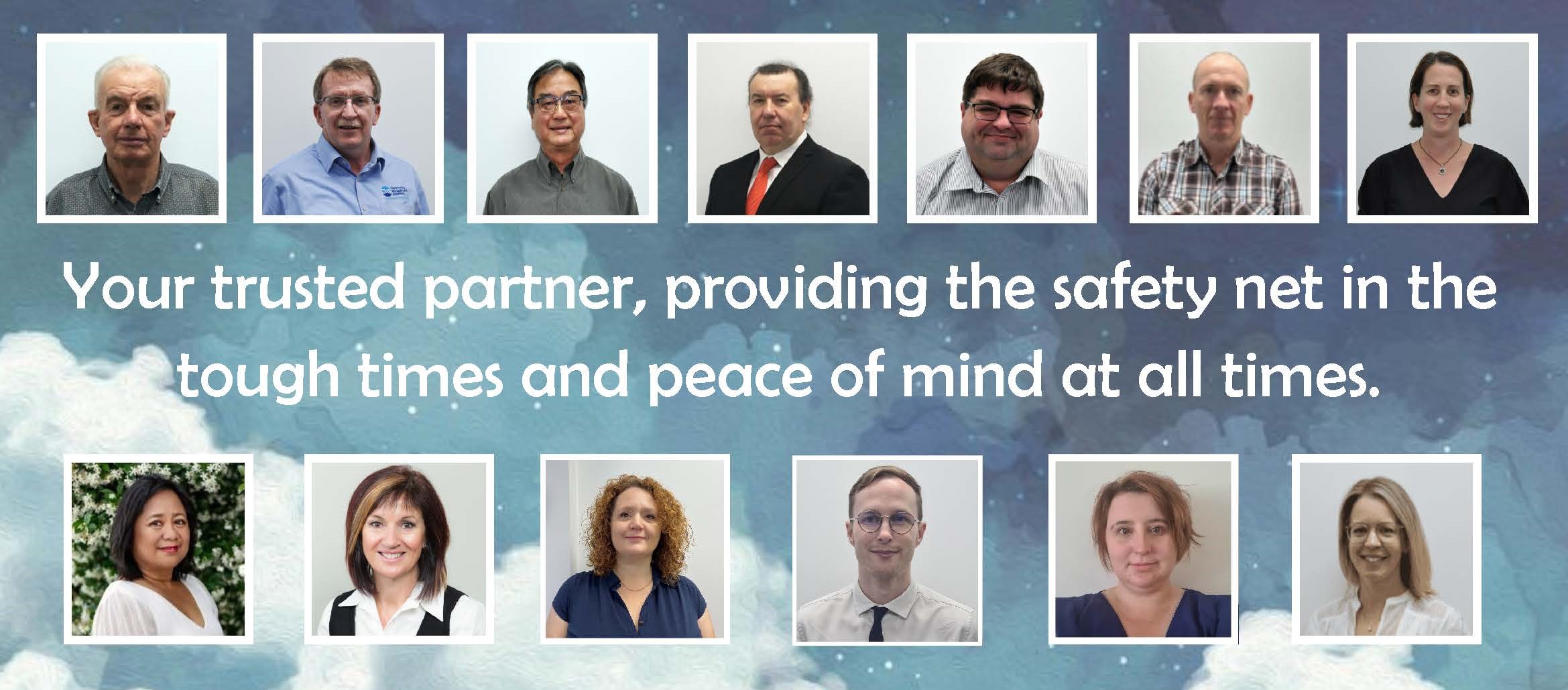
|
|
|
Advertisement - Industry Partner
|
|
|
|
|
|
|
|
|
|
|
|
|
|
|
|
|
EAPS AND SUPPORT RESOURCE
|
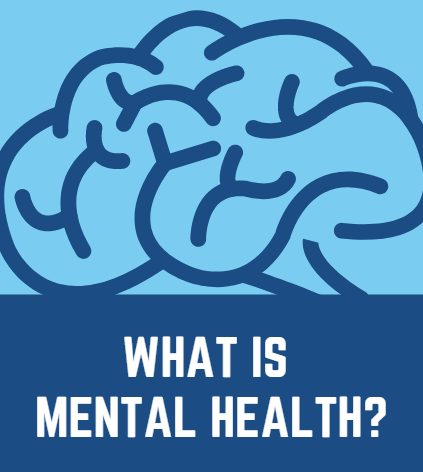
|
CMSolutions are advocates for Mental Health and have partnered with Acacia EAP to ensure our members can access a service to support their staff.
|
|
| For more information, call 1300 364 273 and mention you are a CMSolutions Member. |
| Other Resources Available: |
|
|
|
|
|
Staff at CMSolutions
|
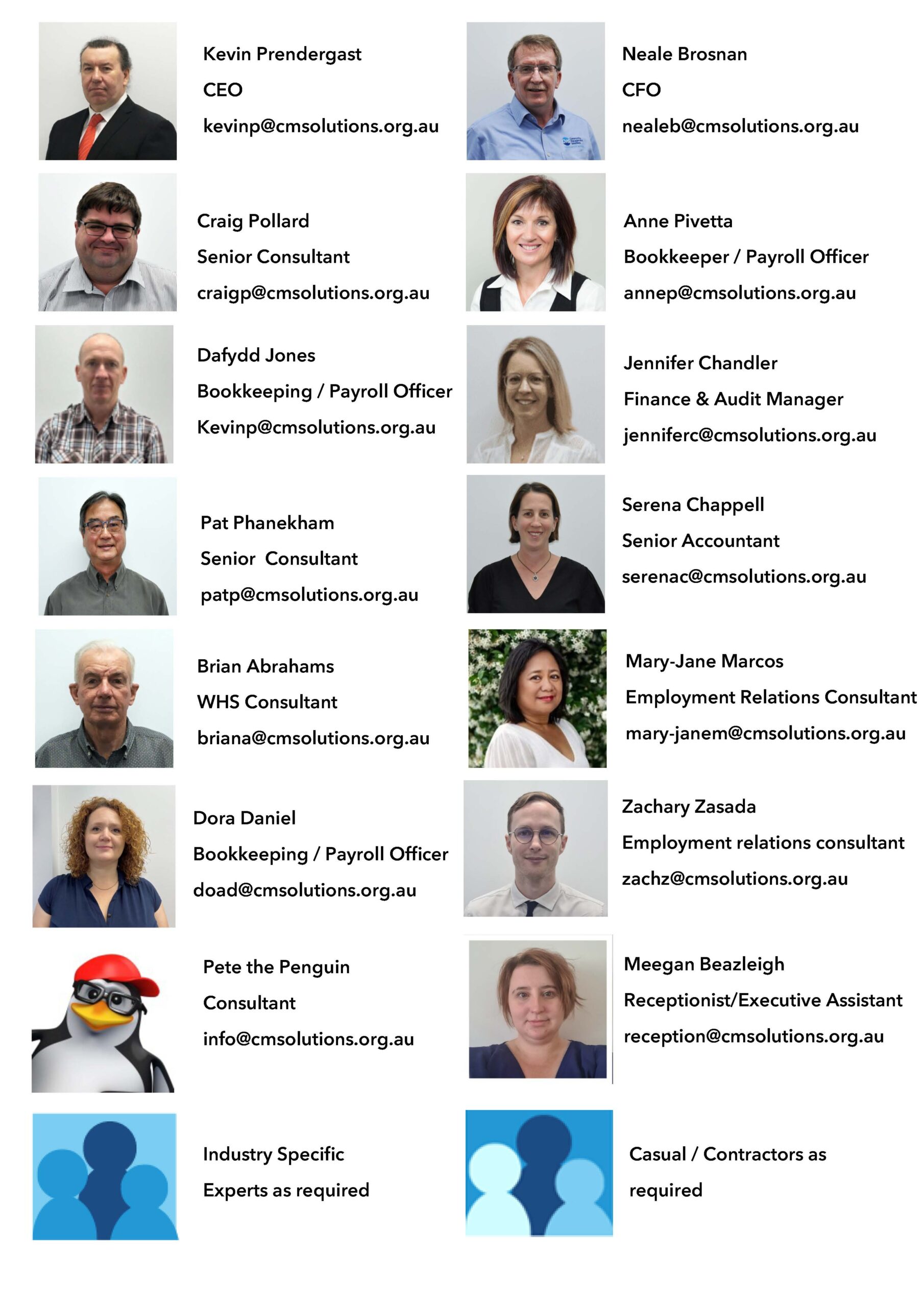
|
|
|
|
|
|